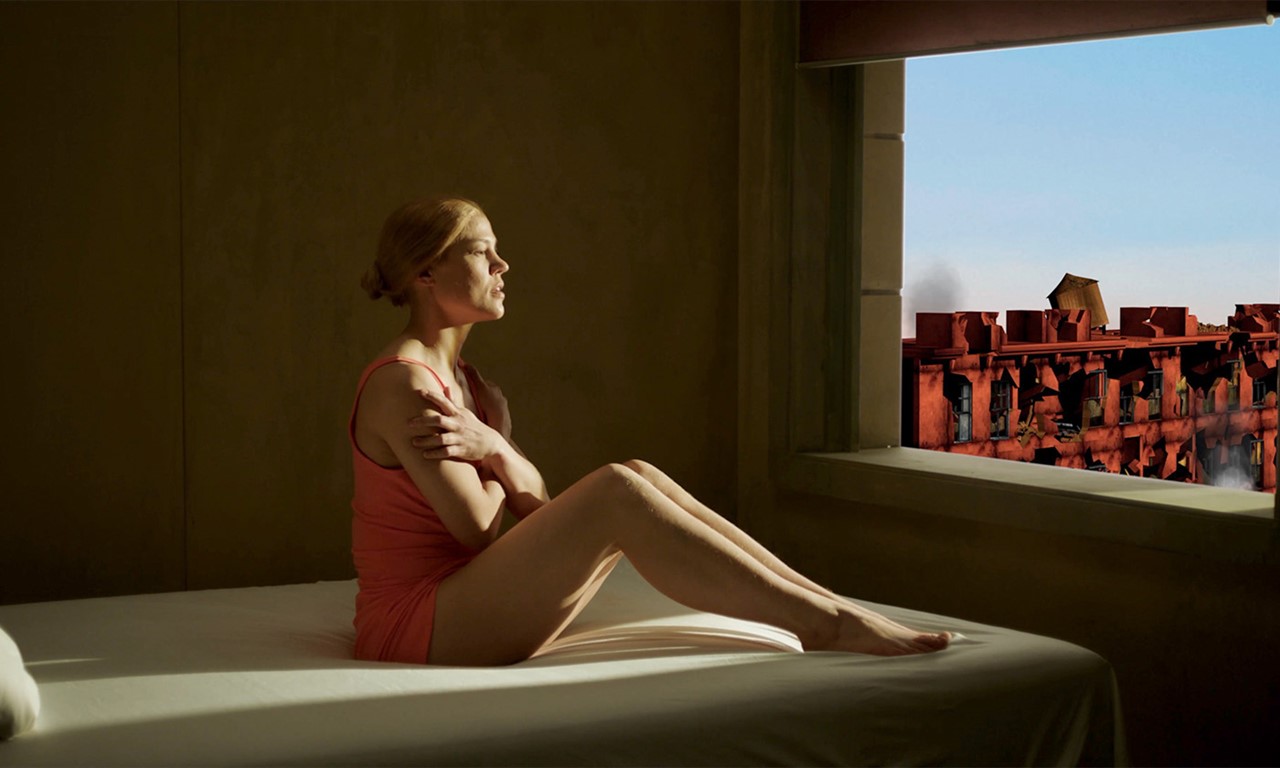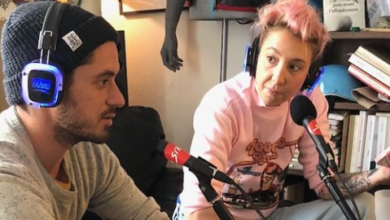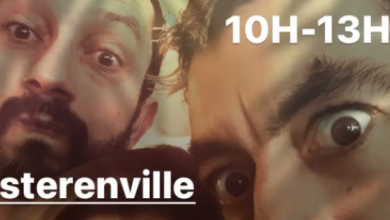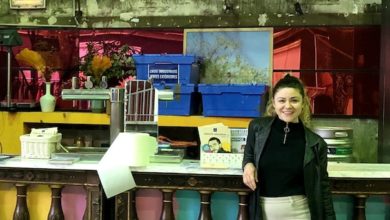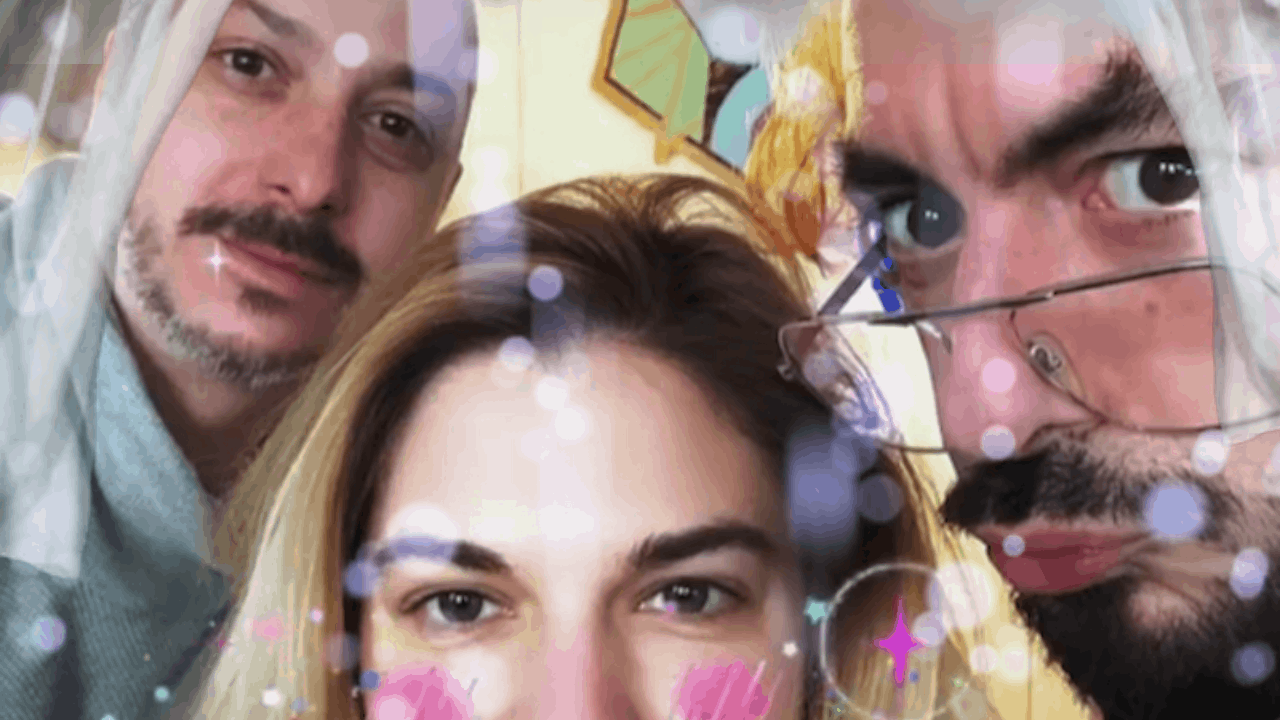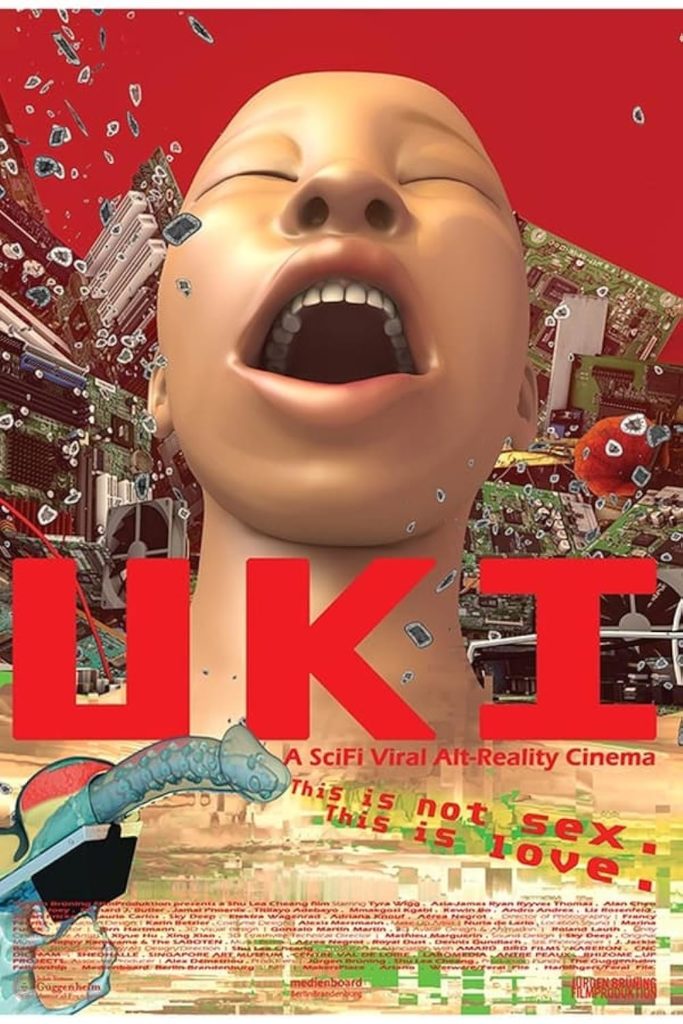
Exploration de la Confluence entre Technologie et Rêve
Version française (scroll down for the English version):
Et si la matrice du temps avait permis la manipulation consciente et inconsciente des gènes, des désirs, des virus et des identités de genre ? Et si notre connexion, autrefois organique, entre les êtres vivants et les êtres virtuels avait été profondément altérée par les ravages de la pandémie, de la maladie, et par la quête insatiable de perfection, propulsant ainsi l’interconnexion virtuelle au statut de norme entre individus ? Je te tiens, tu me tiens par la main, le premier de nous deux qui bougera aura un orgasme !
Cette expérience est-elle le sombre présage d’une solitude qui nous attend ou plutôt la promesse d’une forme inédite de connexion ? C’est précisément ce que Shu Lea Cheang, l’artiste américano-taïwanese, explore de manière subtile et nuancée. La matière visuelle du film oscille entre film d’animation et rencontre entre des interprètes dont l’humanité réside uniquement dans leur chair et l’intensité de leurs émotions. Le protagoniste central de l’histoire, Reiko, chargé de recueillir des données sur les orgasmes pour le compte de la société biotechnologique, Genom Corp, se perd dans une masse colorée numérique 2.0, créant ainsi une expérience presque hallucinatoire où la réalité matérielle s’efface. Le film nous transporte dans un voyage qui peut parfois évoquer un trip sous acide, sans la boucle infernale infinie.
Le « Game Over”/réveil en sursaut intervient lorsque le virus rouge, tel un gros bouton rouge plastique évoquant le jackpot des jeux Game Boy, apparait en gros plan, presque 3D, pour nous rappeler que tout ceci n’est qu’une simulation, un test malicieux pour vérifier notre éveil. Cette mascotte rouge réapparaît régulièrement à l’écran, rappelant subtilement au spectateur de ne pas se perdre complètement dans cette masse binaire infinie. Reiko tente bien que mal de trouver son chemin, toujours en quête de réponses sur l’amour viral, dans une course effrénée en roller dans la matrice du biohaking.
Le deuxième protagoniste principal du film, le personnage d’Anna, beauté blonde androgyne, apporte une touche d’humanité à UKI. Comme une pause au milieu de ces images synthétiques robotiques et numériques, parfois anxiogènes. En robe rouge, assise sur un lit, les bras enlacés autour de ses jambes, Anna s’éveille dans une pièce évoquant le tableau « Morning Sun » d’Edward Hopper. Malgré sa mélancolie, son visage éclairé par l’espoir, elle semble à la fois captive et protégée d’une pièce étroite, surplombant une ville artificielle au loin. Elle attend patiemment la fin de l’histoire, du numérique peut-être, ou au contraire son intégration/assimilation à la matrice.
Les références à Hopper se poursuivent avec un rappel du tableau « Nighthawks« , représentant un diner à l’américaine éclairé de manière inquiétante par des néons. À l’arrière-plan, un écran virtuel diffuse en boucle le déclin progressif de l’humanité : pandémie, violence, vaccins, fin du monde, etc. À l’intérieur du diner, les personnages, dont Anna, sirotent leur café, lisent le journal, en toute quiétude, insensibles au chaos extérieur. Anna multiplie les rencontres orgasmiques éphémères avec des voisins de table queer, paume contre paume, toujours dans le partage de ce plaisir numérique solitaire, mais safe pour le corps. Qui sont ces personnages pour elle ? Des rappels de sa profonde solitude ou simplement des connexions superficielles constantes ?
Cette méditation virtuelle, à la fois envoûtante et provocante, se conclut avec la naissance d’Allan, le clone masculin d’Anna, qui termine la danse dans la même chambre tour d’ivoire qu’Anna, s’endormant paisiblement dans ce rêve électrique tandis que le soleil se couche. Au moins, la transition se révèle en toute sécurité, car finalement le film UKI nous dessine une nouvelle matrice de connexion possible, haute en couleurs et protégée par des parois de verre, comme les bords d’un tableau hopperien.

English version:
Shu Lea Cheang’s “UKI »
Exploration of the Confluence Between Technology and Dream: A Profound Look at the Human Condition
What if the matrix of time allowed for the conscious and unconscious manipulation of genes, desires, viruses, and gender identities? What if our once-organic connection between living beings and virtual entities had been profoundly altered by the ravages of pandemics, disease, and the insatiable quest for perfection, thus propelling virtual interconnection to the status of the norm among individuals? « I’ve got you, you’ve got me by the hand, the first one to move will have an orgasm!”
Is this experience a dark foreboding of impending solitude, or rather the promise of an unprecedented form of connection? This is precisely what Shu Lea Cheang, the American-Taiwenese director, explores with subtlety and nuance. The visual substance of the film oscillates between animation and encounters among performers whose humanity resides solely in their flesh and the intensity of their emotions. The central protagonist of the story, Reiko, tasked with gathering data on orgasms for the biotechnology company Genom Corp, becomes lost in a colorful digital 2.0 mass, creating an almost hallucinatory experience where material reality fades away. The film takes us on a journey that can at times evoke a trip under the influence of acid, without the never-ending infinite loop.
The « Game Over » or sudden awakening occurs when the red virus, resembling a large plastic button reminiscent of a Game Boy’s jackpot, appears in close-up, almost 3D, to remind us that all of this is but a simulation, a mischievous test to check our wakefulness. This red mascot reappears regularly on the screen, subtly reminding the viewer not to get completely lost in this infinite binary mass. Reiko struggles to find her way, always in pursuit of answers regarding viral love, in a frenzied roller skate race through the biohacking matrix.
The second main character in the film, the androgynous blonde beauty Anna, adds a touch of humanity to « UKI. » She serves as a pause amidst the synthetic, robotic, and sometimes unsettling digital imagery. Clad in a red dress, sitting on a bed, arms wrapped around her legs, Anna awakens in a room reminiscent of Edward Hopper’s painting « Morning Sun. » Despite her melancholy, her face is lit with hope, and she appears simultaneously captive and protected in a narrow space, overlooking an artificial city in the distance. She patiently awaits the end of the story, perhaps of the digital world, or conversely, her integration/assimilation into the matrix.
References to Hopper continue with a reminder of the painting « Nighthawks, » depicting an American diner eerily lit by neon signs. In the background, a virtual screen loops the gradual decline of humanity: pandemic, violence, vaccines, the end of the world, and more. Inside the diner, characters, including Anna, sip their coffee, read the newspaper, seemingly unaffected by the chaos outside. Anna engages in fleeting orgasmic encounters with queer table-mates, palm against palm, always in the shared experience of solitary digital pleasure, yet safe for the body. Who are these characters to her? Reminders of her profound solitude or simply constant superficial connections?
This virtual meditation, both captivating and provocative, concludes with the birth of Allan, Anna’s male clone, who finishes the dance in the same ivory tower room as Anna, peacefully falling asleep in this electric dream as the sun sets. At least, the transition proves to be safe, as « UKI » ultimately outlines a new matrix of connection that is as colourful as it is secure, like an Edward Hopper painting.
MORE : HERE

